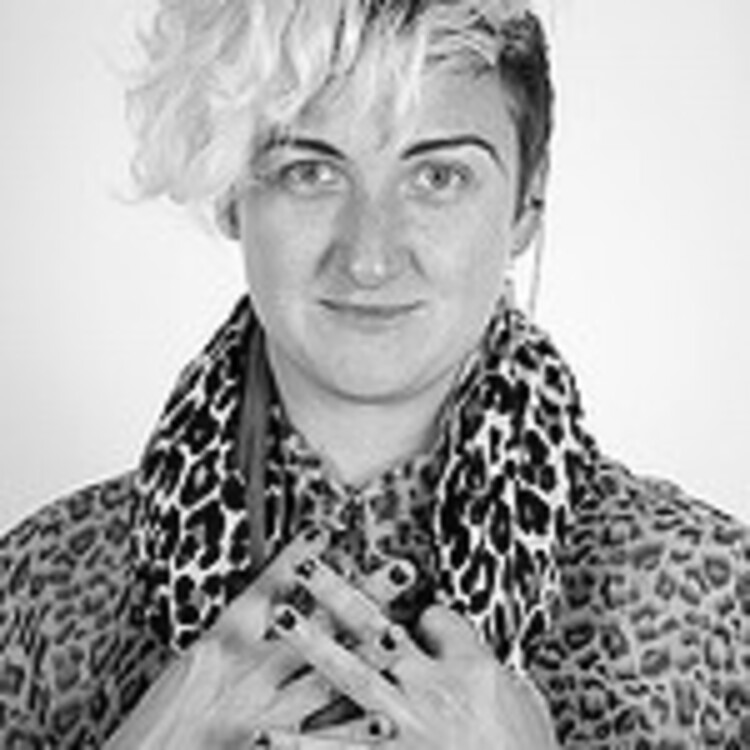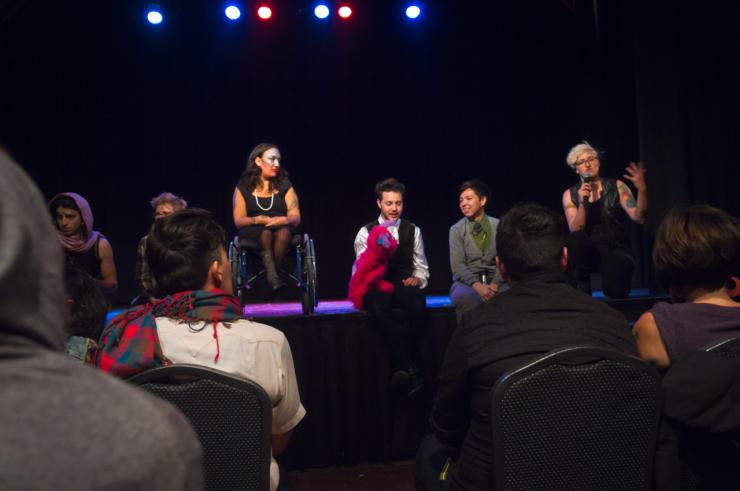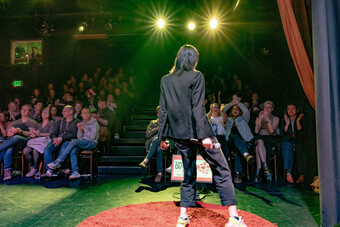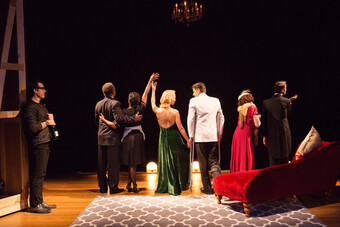The News
Gathering Curators to Produce a New Resource for Everyone
Creating and running an event is not something that anyone teaches you. You learn it out of necessity. You look around, pay close attention to what you see—and what you don’t see—and in the end, you learn by doing. You make a lot of mistakes. In September 2015, twenty-five curators came together to share their mistakes, successes, and experiences in queer performance curation at a roundtable hosted by The News and SOMArts Cultural Center. When we left that night, the seeds were sown for a publicly available, living document focused on queer curation. But let me tell you how we all came to this table.
When I moved to San Francisco a little over three years ago, I’d never had a desire to run a performance night. But to my surprise, I found myself approaching SOMArts to propose one. I had just moved from Los Angeles, and as a media-maker and performing artist had become accustomed to having a few consistent queer performance evenings; I naively presumed that every city would have this.
In San Francisco, I found some inspiring one-off events offering space to new performers, and a bounty of queer performance in the nightlife scene, but nothing occurring with the consistency of the then-monthly performance evening Queer Mondays at Highways Performance Space in Los Angeles. Where could queer performance makers cut their chops? Where could they take risks and try new things?
Queer Mondays was an exciting idea—open to everyone, ten-minute performances, and only five dollars. Each month there was a little bit of everything, and with a few months—or sometimes weeks—notice, an artist could be onstage.
Inspired by Queer Mondays, I wanted to create a monthly evening dedicated to showcasing new queer work, including experiments, debuts, and works-in-progress. The evening would be anchored in the idea that sharing something new, risk-taking, and often vulnerable is of immense value for both the artist and the audience. It’s an opportunity for artists to discover new collaborators and get feedback about their work.
I made the case to SOMArts, an organization deeply invested in supporting the professional development of artists. The organization agreed to back my idea with space, technical, and outreach support, and a curatorial stipend—only a few months later, The News was born!
Now nearly three years old, The News at SOMArts has hosted over 220 performing artists of all disciplines, eighteen guest curators, an improv dance evening, and a curatorial roundtable.
In the first six months of The News, I was both host and curator.
It then became apparent I could reach a broader range of performers and audience by engaging guest curators. Many of these curators had created and/or run a performance evening, and all of them identified as artists.
They looked at the art world and saw no room for themselves and the art that excited them. And because they saw no room, they created room. They were not just curators, but what I call “spacemakers.” They worked backwards: seeing the worth in the art around them, they made a space for that work.
The one-on-one conversations I had with guest curators were of immense value, and so I wondered: what if we could gather together as curators and learn from one another in a group setting? What specific challenges were we facing in curating queer work, and what could we learn from each other?
So I turned to a coworker and fellow curator, Fallon Young, about my desire to create a queer curatorial roundtable. She jumped at the opportunity to collaborate on this project and we began framing the questions and inviting a wide range of performance curators that engage with queer works.
There were three guiding rules for the evening: 1) it needed to be a roundtable; 2) it needed to be framed in a way that would prevent the loudest group from dominating the conversation; 3) the evening should produce a living document of “best practices.” With these guidelines in mind, we created a large circle of chairs and had a few wireless microphones available for passing around. Ahead of time, Fallon and I identified many key people at the roundtable from whom we wanted to hear answer specific questions, and asked for short biographies with each RSVP to inform these questions. This proved to be a successful tool for framing the conversation to include a broader range of perspectives. The second half of the roundtable was open to all.
We were humbled by the attendance—it was truly incredible to see so many talented and innovative artists, curators, and spacemakers in one room. Curators representing a wide range of events and organizations including Yerba Buena Center for the Arts, SALTA, SOME THING: An Art & Drag Dance Party, CounterPulse, National Queer Arts Festival, The Garage, Center for Sex and Culture, African American Art and Culture Complex, Asian Pacific Islander Cultural Center, and Galeria De La Raza—just to name a few.
The conversation was transcribed to summarize the ideas expressed at the roundtable. Those in attendance were also asked to participate in a lightning round of resource sharing. The resources offered included artist residencies, calls for entries, grants, affordable spaces, and places to build networks. The conversation was incredibly fruitful, and everyone agreed they would return for a second roundtable in the future to discuss what we did not have time to cover.
The living document covers questions such as: Is chasing press worth my time? How do I reach out to artists and audiences from different communities? How does one build a returning audience? What does making something “accessible” really mean?
In viewing this living document, the reader will hopefully come away with a broader understanding of what curators do and the different ways they approach and execute a vision. A curator can read this document for concrete examples of what others found successful or problematic. An artist can read this document to get a deeper understanding of the what, why, and how of an event, and where they might intersect as participants. An avid performance goer can read this to gain an insider version of the forces that shape the performance they walk into and the different ways they can engage with the work. Everyone can contribute.
***
Photo 1: Yves St. Croissant presents a new number. Photo by Jess Young.
Photo 2: Artist Q&A after The News. Photo by Timothy Andrew Photography.











Comments
The article is just the start of the conversation—we want to know what you think about this subject, too! HowlRound is a space for knowledge-sharing, and we welcome spirited, thoughtful, and on-topic dialogue. Find our full comments policy here